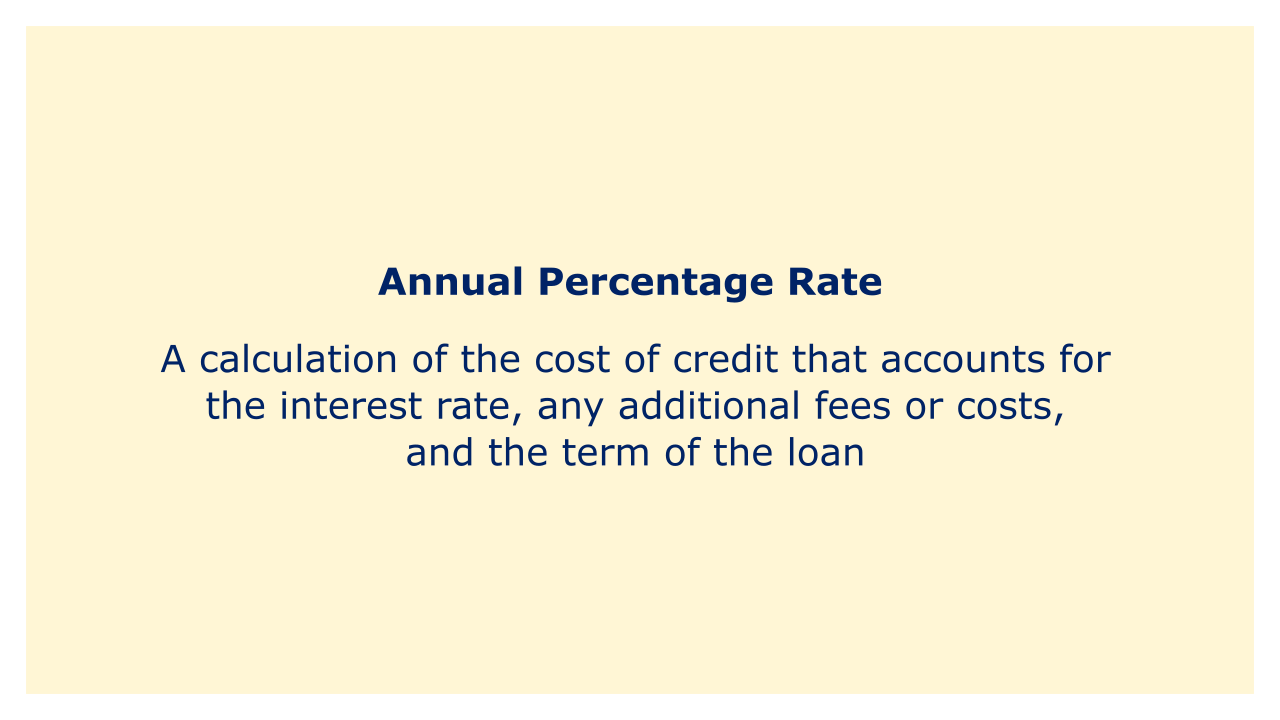 |
| Image: Moneybestpal.com |
The cost of borrowing money is typically expressed using the term "Annual Percentage Rate" (APR). It is a calculation of the cost of credit that accounts for the interest rate, any additional fees or costs, and the term of the loan. It is given at a yearly rate. The APR gives consumers a straightforward and uniform way to compare the costs of various credit products, making it simpler for them to decide which credit products are the most cost-effective.
The interest rate on the loan, the costs related to the loan, and the term of the loan are all taken into account when calculating the APR. Along with the interest rate, the APR also accounts for any other fees or costs incurred in connection with the loan, such as loan origination fees, application fees, and closing costs. The APR offers a more complete assessment of the cost of borrowing money than the interest rate alone because it takes these extra expenses into account.
Annual Percentage Rate = (((Fees + Interest) / Principal / n)×365)×100
Interest = Total interest paid during the loan's term
Principal = Total borrowed
n = Length of the loan term in days
The annual percentage rate, or APR, is what lenders are required by law to report to customers. This makes it simpler for customers to evaluate the costs of various loan options and select the one that is the most affordable. The APR offers a consistent means of describing the cost of borrowing money, regardless of the type of loan, making it particularly useful for comparing the costs of various loans, such as mortgages, personal loans, and credit cards.
